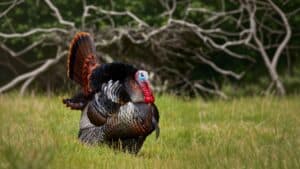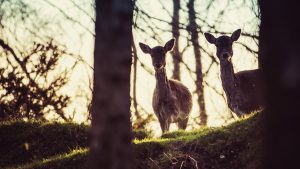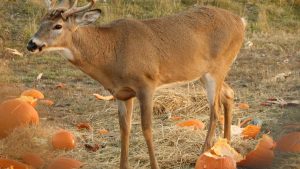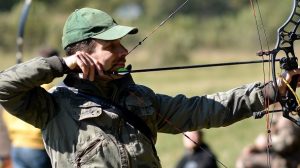Are you a wildlife enthusiast looking to create a haven for deer year-round? Understanding deer behavior and habitat needs is essential for effective habitat management.
In this article, I will explore habitat improvement strategies, assessment of existing habitat features, and the impact of age structure on deer herd health.
Contents (Jump to Topic)
Understanding Deer Behavior and Needs
Deer, in my experience, are creatures of habit, always searching for food, water, shelter, and mates.
They’re incredibly cautious, always on the lookout for safety.
I’ve often seen deer favor a hidden food source over an open, abundant one simply because it feels safer from predators.
Creating a deer haven means providing dense cover for them to feel secure.
I’ve seen how plants like shrubs and evergreens hide deer and blend their scent with the surroundings, adding to their sense of security.
These sanctuary zones are a must for their survival.
Predictable patterns in deer can be encouraged by establishing food plots and thoughtfully placed sanctuaries.
This consistency is crucial for a robust deer herd and successful hunting.
Habitat Improvement Strategies
A well-rounded approach is necessary to create a deer-friendly habitat. This involves creating travel corridors, diverse food sources, and seasonal cover.
Establishing Travel Corridors for Deer Movement
Travel corridors are a game-changer. They encourage safe deer movement between key areas like bedding and feeding spots.
I’ve used native vegetation to create these pathways, ensuring deer can move stealthily and securely.
These corridors also make deer sightings more predictable, which is invaluable for hunters.
Utilizing Cool Season Grasses for Winter Months
In winter, food scarcity is a real issue. I’ve found planting cool-season grasses like wheat and rye provides deer with essential food when natural resources are low.
- White Clover
- Red Clover
- Arrowleaf Clover
- Crimson Clover
- Oats
- Alfalfa
- Wheat
- Austrian Winter Peas
- Rye
- Vetch
- Triticale
- Forage Chicory
- Brassicas
- Ball
- Subterranean
Source: https://www.msudeer.msstate.edu/cool-season-plants.php
These grasses also offer excellent cover, helping deer conserve energy and stay hidden.
Enhancing Natural Food Sources for Deer
Providing a variety of food is vital. I recommend mixing perennial and annual crops in food plots.
Managing tree growth to promote oak and other mast-producing trees in wooded areas can significantly increase natural food availability.
Assessing and Utilizing Existing Habitat Features
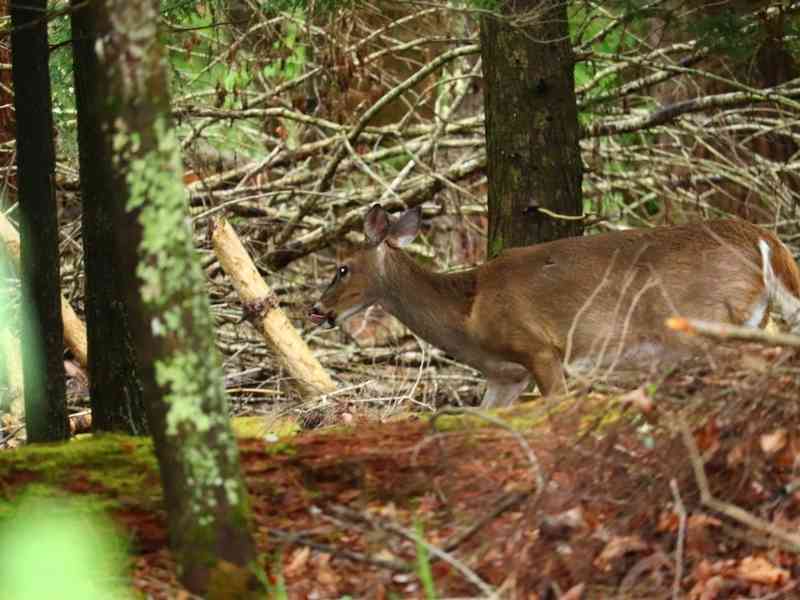
Understanding your land’s specific features is key. In woodlands, look for a balance of canopy closure and diverse ground vegetation.
For forests, a closed canopy with multiple layers is ideal.
And don’t forget about savannas – they’re critical for early successional vegetation, especially after disturbances like fires.
- Conduct a tree inventory to identify species present.
- Observe the herbaceous ground cover to assess diversity and density, which is crucial for foraging and cover.
- Understand the role of different habitat settings in providing coverage and plant communities to support deer populations year-round.
- Implement proper management techniques like prescribed burning and thinning to spur growth in desirable plants and improve the quality of the habitat.
Identifying Desirable and Undesirable Trees for Deer Habitats
Choosing the right trees is crucial. Oaks are great for their mast production and essential for deer nutrition.
Less desirable trees like beech and maple may hinder the growth of more beneficial plants.
Utilizing Native Vegetation for Wildlife Habitat
I’ve found that combining Native Warm Season Grasses (NWSG) with legumes like clover offers excellent cover and forage for deer.
Using prescribed burning and creating woodland openings can also improve habitat quality.
Age Structure and its Impact on Deer Herd Health
A balanced age structure in a deer herd is critical for a healthy ecosystem.
This mix of young, prime, and mature bucks ensures genetic diversity and sustainable breeding.
In my time managing lands, I’ve focused on maintaining this balance to avoid overbrowsing and keep the natural vegetation flourishing.
Monitoring the herd demographics and regulating harvests to maintain a balanced sex ratio are key strategies.
Protecting habitats that cater to deer at different life stages is also important.
To maintain a healthy age structure:
- Monitor herd demographics carefully.
- Regulate deer harvest, aiming for a balanced sex ratio, ensuring that diverse age groups are conserved.
- Maintain and protect habitats that cater to the needs of deer at different life stages, providing them with opportunities for shelter, foraging, and breeding.
Through these considered and intentional actions, you can shape a habitat that supports the health and longevity of the resident deer herd, ultimately enriching the quality of the land and the wildlife it sustains.
Happy hunting and habitat creation!
Sources:
https://www.bowhunting.com/article/how-to-create-structure-for-deer-habitat/
https://www.whitetailhabitatsolutions.com/blog/creating-whitetail-habitat-quickly
https://deerassociation.com/how-to-create-a-heat-refuge-for-deer/
https://www.msudeer.msstate.edu/deer-habitat-landscape.php
https://realtree.com/deer-hunting/cheap-ways-to-improve-deer-habitat

